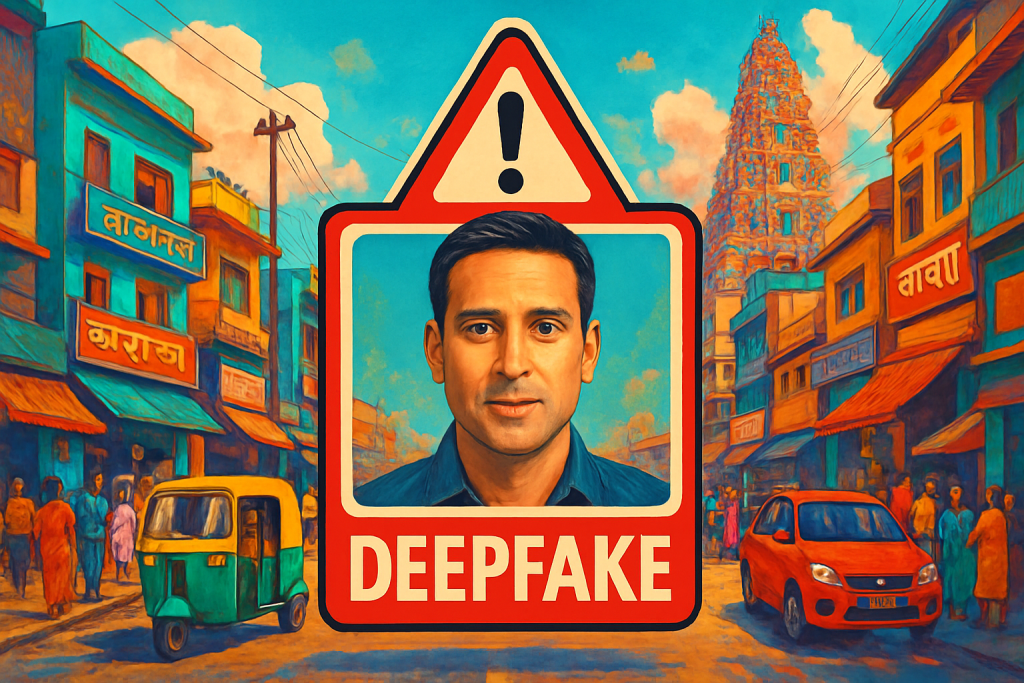The year is 2025. Flying cars are still stuck in development hell (thanks, supply chain!), but deepfakes? They’re here, they’re terrifyingly realistic, and they’re causing a global headache. Yesterday, India joined the fray with a bold proposal: force AI and social media companies to slap a big, fat warning label on anything cooked up by artificial intelligence. Think of it as the digital equivalent of those “may cause drowsiness” labels on allergy meds, except instead of drowsiness, the side effect is potentially societal collapse.
But why India? Well, picture this: nearly a billion internet users, a tapestry of cultures and languages more vibrant than a Bollywood dance number, and a deepfake of your favorite celebrity endorsing… something highly questionable. That’s the reality India’s grappling with. The country’s internet landscape is a fertile ground for both innovation and misinformation, making it a crucial battleground in the fight against AI-generated deception.
The problem isn’t just theoretical. Recent legal cases involving doctored videos of Bollywood stars have amplified the urgency. Imagine waking up to find a hyper-realistic video of yourself saying or doing something you’d never dream of. That’s the nightmare scenario these regulations are trying to prevent. It’s not just about protecting celebrities; it’s about safeguarding the integrity of elections, preventing the incitement of communal tensions, and generally ensuring that people can tell reality from digital fiction.
So, what exactly are these proposed rules? Buckle up, because it gets specific. The draft regulations demand that AI-generated visual content be marked with a label covering at least 10% of the image. That’s right, 10%. No sneaky little watermark in the corner; we’re talking a visible declaration that this image is a product of silicon and algorithms, not reality. For audio, the identifier needs to be present for the first 10% of playback. Think of it as the AI equivalent of a movie studio logo flashing before the opening credits, except instead of Lionsgate, it’s “This audio was brought to you by a neural network.”
And it doesn’t stop there. Users themselves will be required to declare whether their uploads are AI-generated. Think of it as a digital honor system, but with teeth. Companies will be tasked with implementing technical systems to verify these declarations, ensuring metadata traceability and transparency for all public-facing AI-generated media. This is where things get tricky. How do you reliably detect AI-generated content? What happens when someone tries to game the system? The Indian Ministry of Electronics and Information Technology is currently soliciting feedback from the public and industry stakeholders, a smart move considering the complexity of the challenge.
India isn’t alone in this fight. The European Union and China have already started down similar paths, implementing their own measures to curb AI misuse. But India’s 10% labeling requirement is particularly noteworthy. It’s one of the first attempts to put a concrete, quantifiable number on AI content visibility. This sets a precedent and a potential benchmark for other countries grappling with the same issue. Will it be effective? Only time will tell, but it’s a bold step in the right direction.
OpenAI itself has acknowledged India as its second-largest market. This makes India’s regulations all the more significant. They could dramatically reshape how generative AI operates within the country, forcing companies to adapt and innovate in ways that prioritize transparency and accountability. This is a potential turning point, not just for India, but for the global AI landscape.
But let’s not pretend this is a simple fix. The philosophical and ethical considerations are immense. Are we creating a world where everything is questioned, where trust is eroded by default? Are we stifling creativity by forcing artists and innovators to constantly declare their tools? These are difficult questions with no easy answers.
And what about the financial implications? Companies will need to invest in new technologies to detect and label AI-generated content. This could create new opportunities for some businesses, but it will also add costs and complexities for others. The economic impact remains to be seen, but it’s safe to say that these regulations will ripple through the tech industry and beyond.
Ultimately, India’s proposed regulations represent a proactive attempt to navigate the complex and rapidly evolving world of AI. By prioritizing transparency and accountability, the government is hoping to protect its citizens from the potential harms of misinformation and deepfakes. It’s a high-stakes gamble, but one that could pave the way for a more responsible and trustworthy digital future. Will it work perfectly? Probably not. But as Jeff Goldblum famously said in Jurassic Park, “Life finds a way.” And in this case, so will misinformation, but hopefully, these regulations will give us a fighting chance.
Discover more from Just Buzz
Subscribe to get the latest posts sent to your email.


